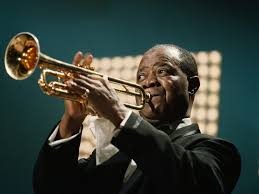Introduction
The Jazz Age, a term coined by F. Scott Fitzgerald, signifies a period of explosive growth and cultural transformation in American music. Spanning the 1920s, this era not only introduced jazz to a broader audience but also laid the groundwork for much of modern American music. As we explore the depths of the Jazz Age’s influence, we uncover how its innovative rhythms, improvisation, and distinctive styles forever reshaped the American musical and cultural landscape. This journey into music history reveals the dynamic ways jazz infused its energy into various music genres, marking an American music evolution that echoes through the ages.
The American Music Evolution: Jazz Age, A Cultural Revolution
The Jazz Age, spanning the 1920s, marked a period of profound cultural and social transformation in the United States, driven predominantly by the explosive popularity of jazz music. Born out of the African American communities primarily in the South, jazz quickly migrated to the urban landscapes of Chicago, New York, and New Orleans, carrying with it a new rhythm that would dictate the tempo of the decade.
Origins and defining characteristics of the Jazz Age
Jazz music originated in the late 19th and early 20th centuries, a product of African American musical traditions blending with European harmonics and form. Its defining characteristics include improvisation, syncopated rhythms, and a strong emphasis on solo performances. The Jazz Age saw the evolution of jazz from a nascent musical form into a dominant cultural force, propelled by technological advancements like radio broadcasting and phonograph recordings that facilitated its widespread consumption.

Impact on American society and culture
The Jazz Age significantly impacted American society and culture, symbolizing a break from tradition and promoting a spirit of rebellion and freedom. Jazz music challenged conventional norms, encouraging a more relaxed social attitude and fostering an environment where people of different races could interact, particularly in jazz clubs. The era also saw the rise of the “flapper,” young women who defied traditional gender roles by embracing more liberal lifestyles and fashion, much of which was influenced by jazz culture. In essence, the Jazz Age was not just a musical revolution but a social and cultural upheaval that reshaped American identity.
Influence on American Music Evolution
The Jazz Age catalyzed a seismic shift in the landscape of American music, laying the groundwork for various musical genres and influencing generations of musicians to come.
Jazz Age pioneers and their contributions to music
The Jazz Age was illuminated by the brilliance of several pioneering musicians whose innovations expanded the horizons of American music. Louis Armstrong’s virtuoso trumpet playing and unique vocal style propelled jazz into mainstream popularity, while Duke Ellington’s compositions introduced a level of sophistication and complexity previously unseen in jazz. Bessie Smith, known as the “Empress of the Blues,” blended blues with jazz, showcasing the emotional depth and versatility of jazz music. These pioneers not only defined the sound of the Jazz Age but also inspired future musicians to explore and experiment with music.
Fusion of jazz with other music genres
The influence of the Jazz Age on American music evolution is perhaps most evident in the fusion of jazz with other music genres. Jazz elements found their way into the blues, creating swing and eventually giving birth to rock ‘n’ roll in the 1950s. Even classical composers, such as George Gershwin, incorporated jazz elements into their compositions, bridging the gap between classical music and the infectious rhythms of jazz. This fusion of genres demonstrated jazz’s versatility and its ability to enhance and evolve other musical forms.
Legacy of the Jazz Age in shaping modern American music
The legacy of the Jazz Age in shaping modern American music is undeniable. It laid the foundation for the cultural and musical diversity that characterizes the contemporary music scene. Jazz introduced improvisation as a key element of musical expression, a concept that remains central in jazz, rock, and even hip-hop today. The emphasis on individual expression and the breaking of musical and cultural boundaries during the Jazz Age have influenced countless artists, urging them to push the limits of creativity and innovation. Consequently, the echoes of the Jazz Age can still be heard in American music, making it a defining era that reshaped the cultural landscape forever.
The Jazz Age left an indelible mark on American music, weaving its rhythms and harmonies into the fabric of American culture. Its influence extended beyond music to reshape social attitudes, fashion, and even language. By blurring racial lines and challenging conventional norms, jazz paved the way for future genres and movements, ensuring that its spirit lives on in the diverse soundscape of American music today. In essence, the Jazz Age was not just a fleeting moment in American music evolution but a revolutionary force that continues to inspire and evolve.
